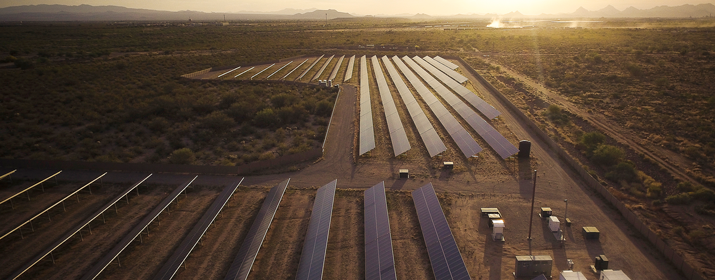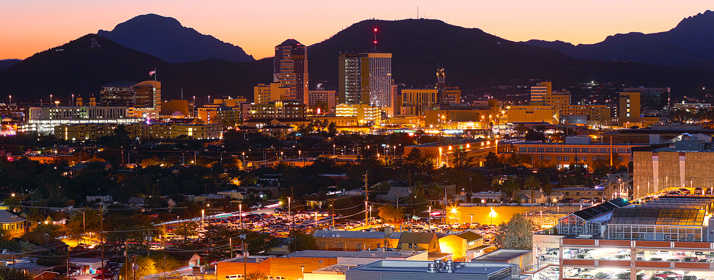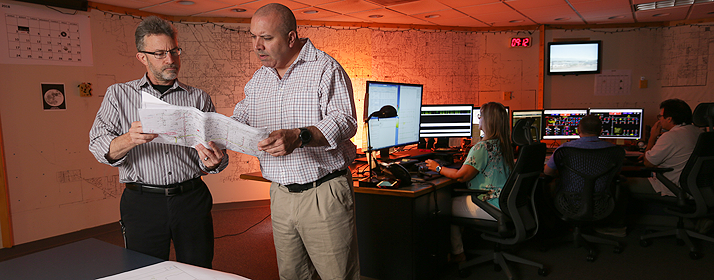
Tucson Electric Power is making major investments in renewable energy resources and infrastructure to support our community’s business growth and strengthen service reliability.
In the past five years, TEP has spent about $1 billion on improvements, including new substations and power lines. To prepare for the future, we’re dramatically increasing our use of solar and wind power and investing in energy storage systems to support our local electric grid.
New Lines and Upgrades
From northwest Tucson to Vail, TEP crews have installed new overhead and underground lines, upgraded transmission lines, added new equipment and made other improvements.
This year alone, TEP plans to invest about $260 million in electric transmission and distribution facilities and other resources that help deliver service to customers.
Improvements include the completion of the 138-kilovolt (kV) Orange Grove Substation, a $14 million project on the corner of West Orange Grove and North La Canada roads earlier this year, pictured above.
Read about recent TEP system upgrades.
Solar and Wind Power
More than 380 megawatts (MW) of wind, solar and battery storage projects are scheduled to come online over the next few years to serve our customers. About 13 percent of our community’s power came from renewable energy resources last year.
TEP is planning to bring at least 150 MW of new wind resources online by the end of 2020. When completed, the new systems will produce enough clean energy to power more than 36,000 homes.
TEP’s largest local renewable energy resource is expected to be in service by the end of 2020. TEP plans to buy energy from a 100 MW solar array and a 30 MW energy storage system built by NextEra Energy Resources. That will be large enough to power 21,000 homes.
Already, TEP is a national leader in energy storage systems with 21 MW of battery storage, ranking third in the country among utilities according to the Smart Electric Power Alliance. Batteries can be used to stabilize grid voltage levels and store the output of wind and solar power systems, helping to balance energy demand and supply. Read more about TEP’s expanding renewable energy portfolio.
Track TEP’s solar and wind generation in real-time.
Planning for Business Needs
TEP is supporting economic growth of the aerospace corridor with new facilities planned near the Tucson International Airport.
A planned 138 kilovolt (kV) substation, transmission lines and switchyard will help meet the growing energy needs in the area, including the upcoming expansion of Raytheon – the city’s largest private employer. The new equipment also will connect NextEra’s solar and battery storage system to our local electrical system.
Read more about the Sonoran Substation proposal.
Modern Generation
TEP is making preparations to install modern, flexible natural gas generators and make other improvements at its largest local power plant, the H. Wilson Sundt Generating Station on East Irvington Road.
The new reciprocating internal combustion engines, or RICE units, are designed to operate much like car engines, providing fast, flexible generation that will help compensate for intermittent output from wind and solar resources. The RICE units will replace less efficient steam generators nearing the end of their useful lives.
Crews recently demolished the coal barn, pictured above, to make room for the RICE units. TEP stopped using coal at the station in 2015.






